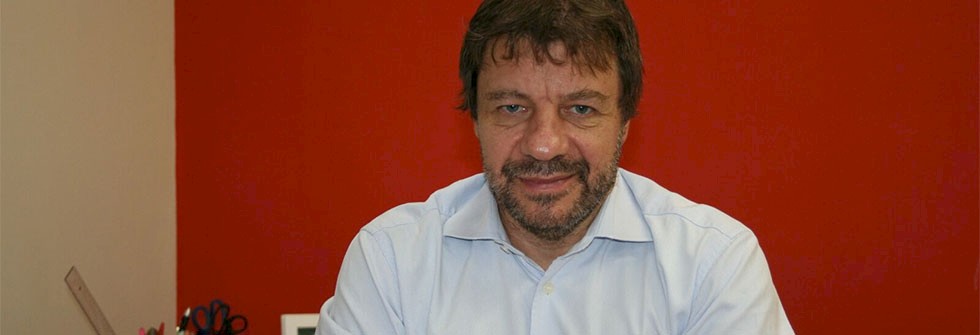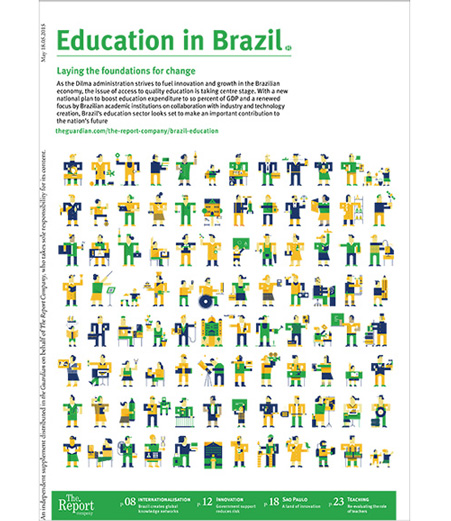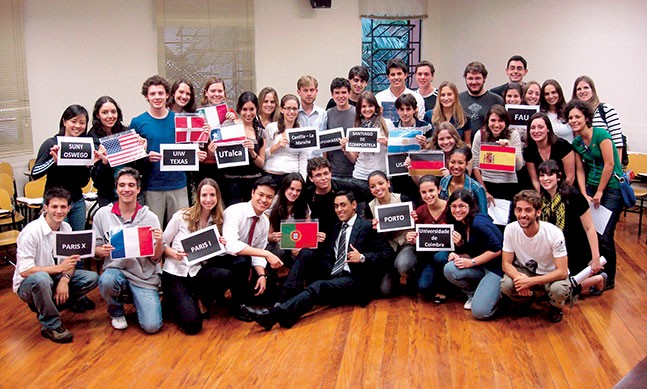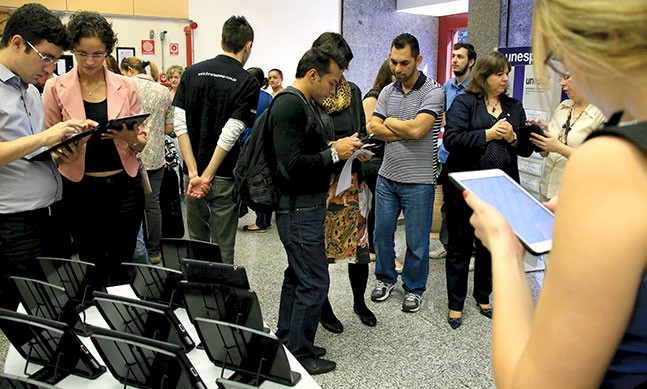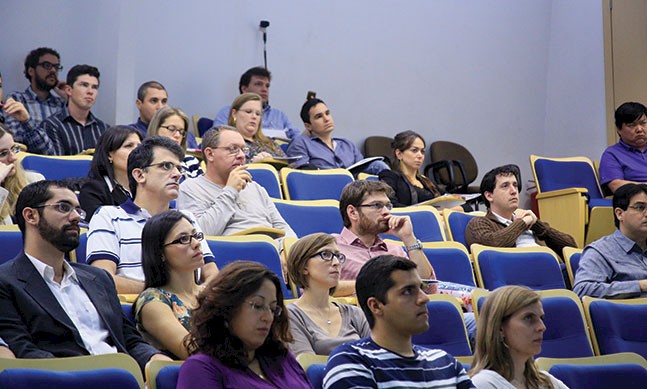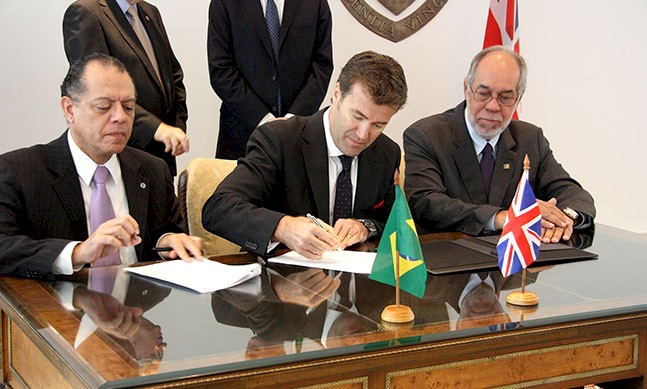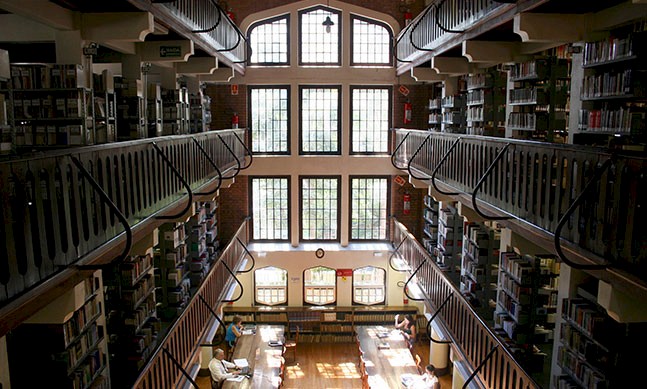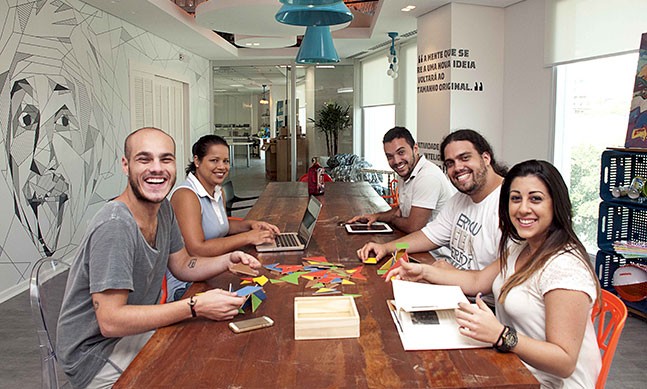Sao Paulo’s greater ABC region is the third biggest industrial centre in Brazil, and the home of the country’s biggest union. The Intermunicipal Consortium was created in 1990 to improve dialogue between the region and the state and federal governments, and it became a public organ in 2010, following a host of successful socio-economic initiatives and the development of the ABC Federal University (UFABC). Today, it leads the push towards innovation in the region, and is looking to attract leading multinational companies to its strategically important location in the heart of Sao Paulo state.
The Report Company: How would you assess the current economic climate in Brazil?
Luis Paulo Bresciani: Brazil had been growing exponentially, especially since 2004. It navigated the 2008 crisis well, but now we are experiencing the delayed effects of it. Our main problem is competitiveness in our industries. Small companies are suffocated by international competition and the inefficiency of some core processes, and they don’t have the resources to modernise, while larger companies are equally struggling to innovate.
TRC: In 2009 you re-mapped the future of the ABC region, something which has been yielding results already. How do you think the region can modernise itself and invest even more in innovation, as well as stimulating the private sector to do likewise?
LPB: There is a tradition in the region of discussing the future, and the region’s governance structure of the region - the consortium, the development agency and the unions – also has a culture of discussing crises and how to avert them. Modernisation and regional development has been on the agenda since the 1980s, and the trade unions play an important role in this discussion.
Participation by the public sector intensified in 2000 and 2001 with a discussion in the ABC regional chamber that established a long relationship with the state government that aimed mainly at the modernisation of the region. Interesting projects came out of this, such as constructing reservoirs to contain flooding, which was a big problem for everyone at that time.
But there were other points on the agenda back then, such as technology and education. In 2000, a proposal was brought that envisaged a series of technological support centres that would receive resources from the state government to modernise the most important regional production chains. However, the project was not implemented the way it was initially intended. State technological colleges were developed in all our cities, but the initial proposal was much larger and included laboratories, equipment, shared centres of technological services and more, but this didn’t happen.
Our goal now is to use the resources the region already has in the best possible way and maximise them, which is the reason why we have decided to map all facilities that can be capitalised on. We have just developed a cooperation agreement between the consortium and the UFABC through which the university will support us in the implementation of regional public policies in infrastructure, urban development and strategic information.
TRC: How do you intend to realise these plans?
LPB: In the short term, when companies need specific resources, what we do is mediate and build bridges. We turn specific needs into solutions, then into projects and involve stakeholders, builders and investors so the projects can be completed. We don’t have a lot of financial resources, but we can establish dialogue with those state and federal institutions that do. The state has a development stimulus programme which focuses mostly on studies. Our regional mobility programme was developed with a small amount from the state government and is receiving federal resources of around R$1 billion from PAC Mobilidade.
There are challenges beyond the economics, though, such as waste management and the reduction of environmental and urban risks. The municipal government of Sao Bernardo is making a huge investment in a drainage project, while our mobility study showed us we need around R$8 billion for the area. We will have R$1 billion in the first step, and we have the same again coming in the second stage, so we still need to find R$6 billion.
There is also the issue of credit. The consortium should be able to take out loans, but in practice only the municipalities do so, and we are discussing that with [Brazilian development bank] BNDES. This has to do with the fact that public consortia are a new phenomenon, and although the entity itself is 25 years old, we have only been a public consortium during the last five years. Such things are clear to us, but the upper echelons of the federal and state governments still have some challenges in order to regulate and to develop public consortia. This type of institution is very recent.
TRC: How many similar entities exist in Brazil?
LPB: The official number is somewhere over one thousand. There are already a lot of public consortia for specific areas such as sanitation and health, while our institution is dealing with the entire aspect of public policy. The goal since mayor Luiz Marinho's administration in 2013/14 and now with mayor Gabriel Maranhao is for the consortium to become more relevant in developing high-impact projects with high-impact resources. For instance, UFABC's laboratories still need to be built, and there's the aviation engineering course, which requires aeroplanes. Who asks for these things? We do, because we have a great relationship with the federal and state governments going back to the 1990s.
“Brazil navigated the 2008 crisis well, but now we are experiencing the delayed effects of it. Our main problem is competitiveness in our industries.”Tweet This
TRC: How do you see the consortium developing from here on and what kind of image do you want to communicate to society?
LPB: In Brazil, the consortia are not part of the federal structure, but we believe that they can assume the role of executing some public policies and particularly here, where we have a tradition of doing so. In Recife, for instance, there is a consortium solely for transport in the metropolitan area, and something like that could be done here with a public transport authority that is anchored in the consortium. We have a municipal civilian police force now, but we are starting a process for them to become a regional force starting with the sharing of a personnel development centre. The consortium could, as well as developing projects to gather resources, also start carrying these projects out in the near future.
TRC: What are the advantages of doing business in the region?
LPB: Our competitive advantages include our location between Sao Paulo and the port of Santos. More than that, though, there is the industrial history of the region which has its roots in the end of 19th century.
Although there has been a great change in the distribution of activities, with a large growth of trade and services - and a great struggle with the real estate sector - the industrial sector can still grow. The services sector can also grow as a support to the industrial sector and we have high-quality services, but competing with Sao Paulo is difficult.
In terms of urbanisation, and especially for Santo Andre, Sao Bernardo and Sao Caetano, our cities have the capacity to house the offices of large companies and development centres. The development of engineering services is very important here, too, and not only manufacturing engineering, but regarding development as well. We have been working with the idea of diversification, so our message is that the region is open for whoever wants to invest in Brazil in new, high-tech industries, oil and gas, defence, chemical. We also have a great and skilled workforce.
Like every large city, we have problems with mobility, but we have been investing a lot in that area, in the regional corridors and the subway system.
TRC: How would you define the identity of the ABC region?
LPB: People know what ABC means throughout the country. They know Santo Andre, Sao Bernardo and Sao Caetano, but they don't always know that there are seven other cities, which together form the greater ABC region. There are intercity family bonds; people live in one city and work in another. Sao Bernardo, Santo Andre and Sao Caetano, especially the latter, received a lot of Italian immigrants and their identity was forged in the 1960s and 1970s, so the culture of industry and labour are very strong. Today the ABC region is the third biggest industrial centre in the country after Sao Paulo and Campos dos Goytacazes and also has the fourth biggest local GDP in Brazil. We are the fifth biggest consumer market in the country, so we are very strong economically.
More than that, though, we are an innovative region in every sense, and are creating public management systems in the areas of health and education. One of the most important missions of the consortium is to plan the future of the region in collaboration with society.
“The greater ABC region’s competitive advantages include our location between Sao Paulo and the port of Santos. More than that, though, there is the industrial history of the region which has its roots in the end of the 19th century.”Tweet This


